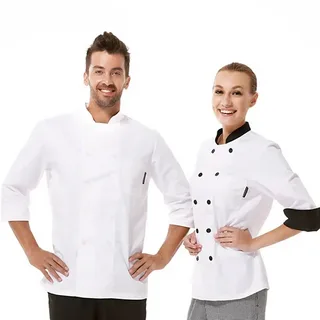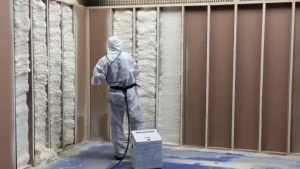Chef uniforms are more than just traditional attire. They are symbols of professionalism, hygiene, and hierarchy in culinary environments. In today’s fast-paced, image-conscious hospitality industry, a well-designed chef uniform balances style, safety, and comfort. This article explores the essential components of chef uniforms, their historical significance, functional features, and the current trends shaping their evolution.
Why Chef Uniforms Matter
Chef uniform near me play a crucial role in maintaining cleanliness, safety, and a sense of order in professional kitchens. According to the World Health Organization (WHO), cross-contamination in food preparation environments can be significantly reduced with proper hygiene protocols, and clothing is a major factor in this.
Here are some key reasons why chef uniforms are indispensable:
-
Hygiene and Cleanliness: Chef jackets and pants are designed to protect food from contamination and shield chefs from hot splashes or spills.
-
Professional Identity: Uniforms instill a sense of pride and reflect the brand image of the restaurant or catering business.
-
Functionality: Chef uniforms include practical features like heat resistance, breathability, and stain resistance.
The Components of a Professional Chef Uniform
A traditional chef uniform typically consists of several standardized elements, each designed with specific functionality in mind.
1. Chef Jacket
The double-breasted chef jacket is perhaps the most recognizable part of a chef’s attire.
Features:
-
Double layer fabric to protect from burns.
-
Reversible front for a quick clean look if stained.
-
White color to reflect heat and signify cleanliness (though modern trends welcome black and grey too).
2. Chef Pants
Chef pants are made from durable, breathable fabrics like cotton or poly-cotton blends.
Key Benefits:
-
Loose-fitting for better mobility and ventilation.
-
Houndstooth or patterned prints to hide stains.
-
Elastic or drawstring waists for comfort during long shifts.
3. Apron
Aprons offer an extra layer of protection and are easy to change between service sessions.
Types:
-
Bib aprons with chest coverage.
-
Waist aprons for lower-body protection.
4. Chef Hat (Toque Blanche)
Historically symbolic of a chef’s experience level, the toque also serves a hygienic purpose.
Function:
-
Prevents hair from falling into food.
-
Allows air circulation to keep the head cool.
5. Non-slip Footwear
Footwear is often overlooked but is vital for safety in slippery, high-traffic kitchens.
Criteria:
-
Slip-resistant soles.
-
Closed toes for protection.
-
Cushioned insoles for prolonged standing comfort.
The Evolution of Chef Uniforms
While the classic white chef wear pants remains iconic, modern kitchens are embracing new trends. Contemporary designs now offer:
-
Custom branding: Embroidered logos and name tags for identity.
-
Gender-specific fits: Ensuring comfort and professionalism for all.
-
Eco-friendly fabrics: Sustainable materials like organic cotton and recycled polyester are gaining traction.
Leading brands like Chef Works, Bragard, and Le Nouveau Chef are at the forefront of merging traditional craftsmanship with modern textile technology.
Chef Uniforms and E-A-T: Expertise, Authoritativeness, and Trustworthiness
In hospitality settings, the uniform is a visual cue of a chef’s expertise and authoritativeness. Diners often associate the sight of a neatly dressed chef with a clean and professional kitchen.
According to a 2023 report by the National Restaurant Association, customer trust increases when visible kitchen staff wear clean, professional attire.
Chefs themselves often prefer uniforms that demonstrate:
-
Their position and rank in the kitchen hierarchy.
-
Their culinary school or restaurant brand.
-
Their commitment to safety and food hygiene standards.
Choosing the Right Chef Uniform: What to Consider
When selecting a chef uniform, consider the following aspects:
1. Fabric Quality
Opt for breathable, durable, and easy-to-clean fabrics. A blend of polyester and cotton often strikes the right balance between function and comfort.
2. Fit and Comfort
Look for ergonomic cuts, side vents, and light-weight designs to prevent overheating in high-temperature environments.
3. Durability and Maintenance
High-quality uniforms withstand frequent washing, exposure to grease, and daily wear without fading or shrinking.
4. Customizability
Personalized uniforms add a professional touch and help strengthen brand identity, especially in open-kitchen or fine-dining establishments.
Uniform Policies in the Hospitality Industry
Many hospitality businesses enforce strict dress codes for food safety and presentation standards. These guidelines often cover:
-
Uniform cleanliness.
-
Appropriate footwear.
-
Hair nets or hats.
-
No visible jewelry.
Complying with these standards not only ensures food safety but also demonstrates the establishment’s dedication to excellence.
Best Practices for Maintaining Chef Uniforms
Proper care extends the life of uniforms and ensures they remain presentable. Here are some tips:
-
Pre-treat stains immediately with a grease-fighting detergent.
-
Wash in hot water (if fabric allows) to kill bacteria.
-
Avoid bleach unless necessary, as it can weaken fibers.
-
Use fabric softener sparingly to maintain breathability.
Where to Buy High-Quality Chef Uniforms
Here are some reputable sources:
-
Chef Works (chefworks.com) – Offers a wide range of durable and stylish uniforms.
-
Bragard (bragardusa.com) – Known for high-end, European-quality chef apparel.
-
Happy Chef (happychefuniforms.com) – Affordable and functional uniforms for all culinary levels.
Final Thoughts
Chef uniforms are a cornerstone of professionalism and safety in the culinary world. Whether you’re a head chef in a Michelin-starred restaurant or a student in culinary school, investing in a high-quality, functional, and comfortable uniform enhances not just your appearance but your performance. As the industry evolves, so do the uniforms—but the core principles of cleanliness, safety, and professionalism remain unchanged.
By selecting the right uniform and maintaining it well, chefs can ensure they not only meet health standards but also present a confident, polished image that earns the trust of diners and colleagues alike.






